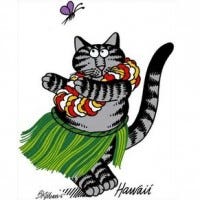Making of Super Mega Baseball No.3 – Naivety
This is the third post in a series about the making of Super Mega Baseball. It covers the initial plans for the game, the first development that was done, and how naive the guys really were.

This is the 3rd post in a series about the making of Super Mega Baseball, copied over from our blog:
When the guys decided to make Super Mega Baseball, they didn’t anticipate that the project would last five years. In fact, there was a lot they didn’t anticipate. After our last post about the initial idea, today I’ll be asking them how naïve they really were about what it would take to implement it…
Liane: How long did you think it would take to create Super Mega Baseball?
Scott: I think in my head I had two years in mind.
Christian: I remember a two-year time frame seeming long. That was the upper limit of what I thought it would take to get something out. It wasn’t really justified by much of anything. We just didn’t think it would take that long.
Scott: We hadn’t done it before, so we just didn’t know.
Christian: We actually had a little schedule that we had made where we had broken down some of the pieces of technology that we knew we were going to need, that we had assigned hilarious values of like a few weeks each to.
Scott: They had, like, unspeakably crude and impossible timeframes assigned to them.
Christian: I remember a two week time block assigned for implementing an inverse kinematic system, a real-time inverse kinematic system for catching balls. When you look at something in a video game, it doesn’t matter how simple it seems, there is such a tremendous amount of work behind the most trivial looking thing. And unless you’ve tried to do that, it’s really hard to appreciate how much work goes into these things that you wouldn’t even think about while playing a game.
Scott: And sometimes there were three or four other versions of a thing that got cut before landing on the final thing.
Liane: Did anyone around you question your two-year timeframe?
Christian: I remember showing our schedule to my Dad and he basically just laughed at it. So yeah, at least my Dad thought it was totally insane.
Scott: I think part of what allowed us to slip under the radar of scrutiny was, at least for me, that I didn’t have a lot of friends in the gaming industry to call my BS.
Scott and Christian thought that they – with no prior video game experience – could build the game in under two years, no problem. But what makes this even more unrealistic is that they planned to do it without using an existing engine.
Liane: Why didn’t you use an engine?
Christian: We didn’t really want to go down that route, I guess. Plus, I mean, to stick to the theme of this post - we just thought, "how hard could it be?" to roll our own.
Scott: I don’t think there was a realistic understanding of just how much core stuff there is, stuff that’s just boilerplate "you need this in place, and so does every other game." And it really doesn’t make sense to try to do that part yourself. We just didn’t have a legitimate understanding of that.
Here’s a look at what they were working with at this time:






Liane: I can see from these screenshots that you had UI (User Interface) at this point.
Christian: Yeah, we at least correctly identified at this point that writing our own UI library was totally insane, so we chose an open source, free library called CEGUI.
Scott: Which we still use today.
Christian: It’s what the game shipped with. And that’s why we’re seeing these grids and overlays on top of beautiful baseball simulations. Not only did we use a UI library, we also had, at this point, FMOD integrated.
Scott: Really? Those builds had sound?
Christian: Yeah, at this point we actually had sound. Very, very primitive sound. But there was sound. There was a little music track that played, and there were sounds for the ball getting hit and stuff. So we used FMOD for sound and CEGUI for the UI, and then the plan was to roll our own for the rest of it.
Liane: What was your plan for art?
Scott: I think, at least for me, there was some possibly baseless optimism that we would find some help with that and/or that we would just stick with a style that was really crude and primitive and just use some of the stuff that we had made. One of the two.
Christian: Yeah I think our very original plan was to effectively try and make the art ourselves.
Scott: **Big laughs**
Christian: That was our plan, the original idea was really, really crude art. And I think that with the technical aspect we were naïve, or at least I was, in how hard it really is. And how much time it would really take to make a piece of art that doesn’t suck.
Scott: Yeah, it’s fun to do a simple, retro, very primitive art style. Like, "programmer art" can be charming… but, it didn’t feel as awesome once it was in there.
Liane: How were you planning on funding the business?
Scott: We knew that we could stay alive and keep going if we could chip away at costs with some contract work, and we did have some money saved up. And getting along for a couple of years wouldn’t have been a big deal if that’s all the time that it was actually going to take.
Christian: Yep, pretty much the plan from the get-go was to boot-strap it, continue doing contract work, and that was pretty much the extent of the plan at that point.
Liane: Let’s go back to this image… you had character names this early on. Where did the names come from?

Scott: Um, uh…a fair bit of drinking on the beach with a notepad. Mostly one afternoon, I think probably half of the names in the entire game were conceived in one day.
Christian: I think we came up with about 120 names at that point. And I think at that point we hadn’t yet made the decision that it was going to be a mixed-gender game, so those were actually 120 male names we came up with. In the one afternoon. And a lot of them survived, and are in the game. The teams and positions may have changed, but a lot of the player names survived.
Scott: I'm disappointed that Elija Gobbleson didn’t make it.
The names were in place, they had UI and sound, but the graphics...well, they were still just boxes on a field. In the next post, we'll be talking about the transition to better graphics.
This blog post was copied over from our blog, see the original here.
Read more about:
BlogsAbout the Author(s)
You May Also Like







.jpeg?width=700&auto=webp&quality=80&disable=upscale)








